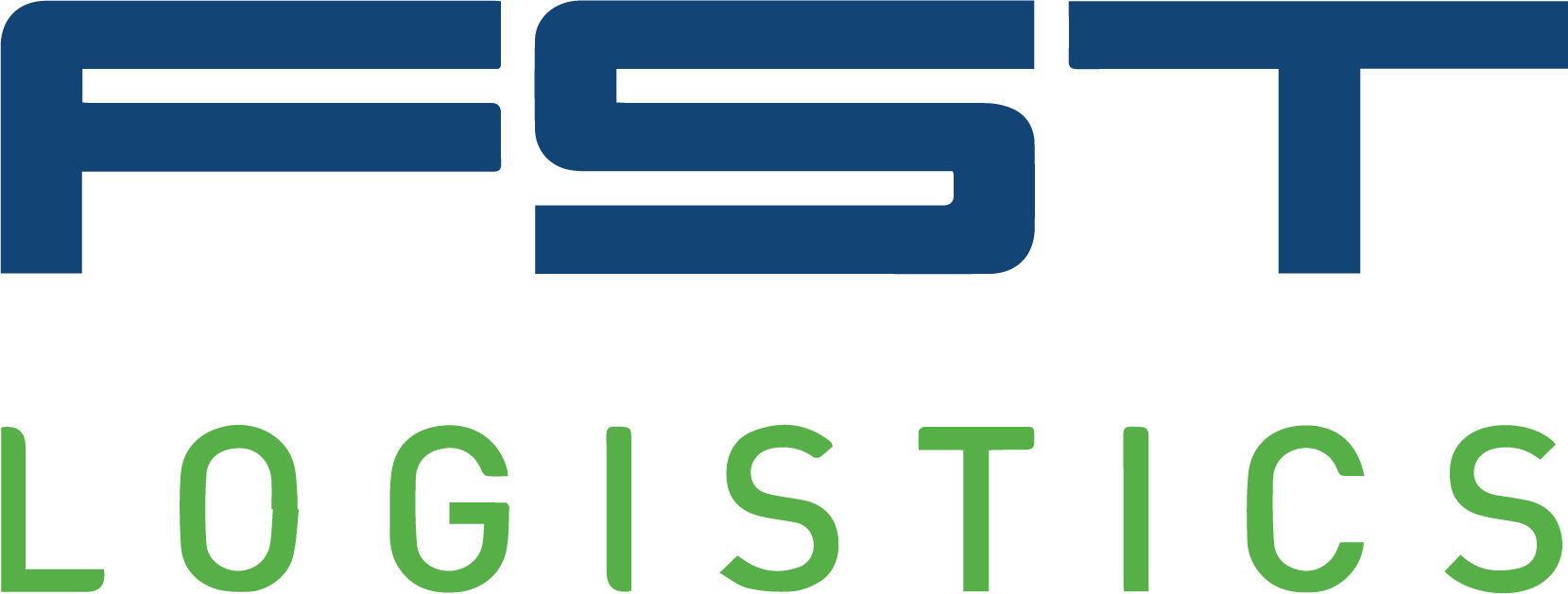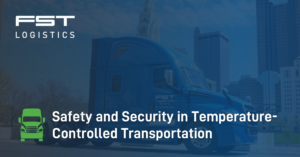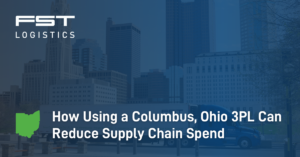Retail Logistics Guide: Key Strategies for Successful Big-Box Launch
Introducing your product into retail stores calls for a launch playbook that’s vastly different from that of online sales. Big box stores play by a different set of rules – think strict vendor requirements and costly fees for non-compliance.
Even if you’re a seasoned pro at e-commerce sales, the retail logistics game has a different playbook, and you’ll want to get familiar with it ASAP. Mastering the nitty-gritty details of retail logistics from the get-go is essential to a profitable partnership.
11 Retail Logistics Considerations
There’s a lot to consider as you begin working with large retail customers. Here are 11 things to keep in mind as you embark on this exciting journey:
- Set profitable minimum order quantities (MOQs)
- Understand freight on board (FOB) vs. delivered pricing
- Prepare to scale
- Evaluate new consolidation and routing potential
- Get clear on retailer scorecards and chargebacks
- Learn and communicate new pallet configuration and labeling requirements
- Prepare for pallet reconfiguration needs
- Ensure your carriers are approved by the retailer
- Get clear on retailer appointment scheduling
- Focus on technology setup and streamlining
- Choose partners that specialize in retail logistics
Set profitable minimum order quantities (MOQs)
Retailers often initiate a trial phase for new brands by placing smaller initial purchase orders, intending to increase quantities if sales perform well. However, if order sizes are too small, transportation costs can eat into potential profits. The good news is that retailers are typically open to negotiations, especially in the early stages of the partnership.
Once you’ve caught a retailer’s attention, it’s crucial to collaborate with your sales and operations teams. Together, set clear minimum order quantity (MOQ) thresholds. Look closely at retail logistics costs and explore options to identify your break-even point.
It’s worth noting that less-than-truckload (LTL) carriers impose absolute minimum charges (AMC), which serve as a base price for pallet delivery. Whether you’re shipping 10 or 30 cases on a pallet, the cost may remain the same if your freight doesn’t meet weight thresholds. Establishing MOQs is a strategic move to ensure that the cost of goods sold (COGS) stays within a profitable range.
Understand freight on board (FOB) vs. delivered pricing
Brands are often given the option to choose between pricing two models – freight on board (FOB) or delivered pricing. The best choice isn’t always obvious. Brands must weigh the pros and cons of cost and convenience before signing a pricing agreement.
FOB refers to when transportation costs are not passed on the the retailer or included in COGS. The retailer is responsible for the shipping costs and coordinates product pickup and delivery. On the other hand, delivered pricing refers to when brands are responsible for transporting their product. Transportation costs incurred by the brand are added to the COGS billed to the retailer.
While relying on distributors and retailers for delivery is often chosen for its perceived convenience, the decision should be weighed against factors like order quantities, frequency, and distribution patterns. It may save time and money for brands with smaller, sporadic orders, but there’s a tipping point where managing one’s pickup and deliveries becomes more efficient and profitable.
Prepare to scale
If initial tests go well, big-box stores may increase order sizes or expand your product to new regions. Ensure you are set up to scale, quickly. Work out all necessary processes so you can call your manufacturers and have them flip a switch to increase production. Talk to warehousing partners to prepare for potential inventory expansion needs. If not ready to move fast and maintain compliance, you risk missing out on major sales potential.
Evaluate new consolidation and routing potential
New retail customers will trigger shifts in order volumes, causing a ripple effect across your supply chain. This presents brands with a chance to assess strategies and discover new efficiencies. Exploring more effective transportation methods, schedules and routes can cut mileage, optimize truck space and reduce overall spend.
Additionally, if you work with a 3PL that specializes in retail logistics, you may be able to consolidate your shipments with their other customers. They may work with brands that deliver to the same or nearby receivers. Confirm what options may be available before locking in transportation rates.
Get clear on retailer scorecards and chargebacks
Coordinating smooth deliveries is essential to your bottom line. Retailers will charge monetary fees that penalize vendors for not getting POs to them exactly on time or to their specifications.
Become knowledgeable about scoring programs for your new retail customers. Understand grading parameters, must-arrive-by dates (MABDs), thresholds and penalties so that you can build your supply chain and operations to prevent added costs.
For example, Walmart scores suppliers on their ability to deliver “on time and in full” (OTIF). If orders are left underfilled or delivered early or late, they could be subject to a 3% fine on the COGS. This can equate to thousands of dollars in added monthly costs depending on PO size.
Learn and communicate new pallet configuration and labeling requirements
Retailers will share vendor compliance manuals that carefully spell out requirements for shipping labels, pallet wrapping, trailer conditions, product configurations and more. These rules should be taken seriously, as they exist to reduce inefficiencies. Also, brands that fail to get up to speed with retail logistics requirements will have orders rejected and be charged penalties for non-compliance. Vendor chargeback fees can be as high as 10% of the total PO.
Don’t risk the potential for order rejections. Get clear on protocols and provide your warehousing partners with clear specifications and instructions for order packaging and staging. This extra step will help your 3PL catch issues before they occur, keep retail customers happy and protect your bottom line.
Prepare for pallet reconfiguration needs
Even when your pallet is meticulously configured, there’s no guarantee that the retailer won’t reject your freight. Unforeseen issues, such as product shifting during transit, may necessitate reworking. In the event of a rejection, having a recovery plan is crucial.
While redelivery is an option, there is potential for costly delays if efficient systems aren’t in place for swift reworking. Collaborate with your retail logistics partners to establish relationships with facilities situated near receiver locations. This ensures that these facilities can promptly assist in tasks like rewrapping or reconfiguring an order, enabling you to meet delivery deadlines even in the face of unexpected challenges.
Ensure your carriers are approved by the retailer
Retailers will share vendor Routing Guides with “preferred carriers” that make more frequent deliveries to their facilities. You’ll want to work with these preferred carriers. They can offer more reliable schedules and provide shippers with better service. This consistency helps brands to more easily meet strict Must Arrive by Dates (MABDs) and deliver on retailer-specific demands.
Just because a carrier provides a rate does not mean they can meet your service requirements. They may be able to deliver, but not within the retailer’s preferred appointment windows, making your deliveries late or non-compliant. As stated before, not meeting retail logistics requirements comes with costly penalties. With retail shipping, it is crucial to know which carrier is best suited for delivery to each receiver.
Get clear on retailer appointment scheduling
Also outlined in retailer Routing Guides are appointment scheduling protocols. Each retailer operates differently. For example, UNFI only receives freight outside of traditional operating hours. Making the mistake of sending a driver to the receiver when it isn’t accepting orders can be costly – think detention charges from carriers, redelivery fees or scorecard penalties. To keep operations moving smoothly, ensure your retail logistics partners are aware of any specifications on how to schedule appointments.
Focus on technology setup and streamlining
Integrating properly with retailer technology is key for ensuring vendor compliance. Most big box stores will submit POs through enterprise resource planning (ERP) systems, which require electronic data integration (EDI) technology. Work out any bugs and ensure systems are working in harmony. Don’t delay this step. If technology is not seamless, there is an increased risk of costly inefficiencies, missed orders and damaged customer relationships.
Choose partners that specialize in retail logistics
Growing from online to retail sales requires a seamless transition that can be challenging to manage. But getting products on the shelf can be flawless when your logistics partner has experience with big-box deliveries and understands intricacies like retail sailing schedules, pallet staging requirements, which carriers operate most frequently at each DC and how to avoid potential on-time delivery hurdles.
Mastering Retail Logistics in Big-Box Stores
There is a lot to learn as you embark on the exciting journey with a new retail customer. The stringent vendor requirements and potential fees for non-compliance necessitate a strategic launch plan. Use our checklist of crucial considerations to set yourself up for success.
Need a partner to help navigate retail logistics challenges? Contact FST today to learn how we can set your CPG brand up for success.



